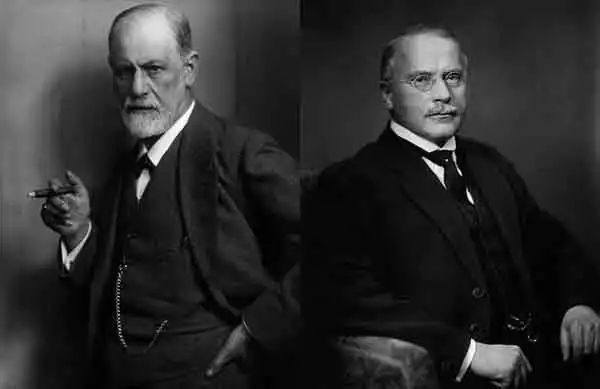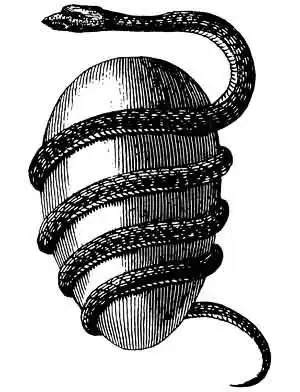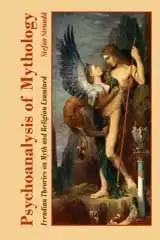Psychoanalysis of Myth 9
Conclusions: Personal Myth
In therapy sessions, several patients have revealed concepts and images that neither Freud nor Jung could imagine to have come out of personal experience. Thereby, they actually seem to have underestimated the complexity of the human psyche.
The human mind is quite able to absorb a multitude of impressions from its surroundings — even unawares — and make its very personal stew of it all, one that it can itself fail to interpret or at all understand. We need not have first hand experience of everything we load our minds with, we fill it also with hearsay, things implied, misunderstandings, rumors, vague impressions, what not. The human brain input is so vast that there is simply no way of saying what it cannot have amassed. And it starts long before we are even able to talk. Freud and Jung took support for their theories in the fact that they received complex, seemingly mythological images also from children. Well, those children were able to talk about these things, or they would not have been able to present them — and by the time you have learned to talk, you have learned a lot of other things as well. It is also odd that the two pioneers in dream interpretation neglected the possibility of personal dreams mixing with social awareness, and finding a collective frame of reference in which to translate them. This is what every artist does: inner fantasies are translated to a form conceivable to other people. A writer needs to do this when putting the story into words, since words are instruments for communication between people. The mere writing down of a story, then, equals translating it to a socially understandable form. A painter does something similar when reproducing an inner image with the tools of the brush and the colors, a musician with his instrument, a dancer with his body movement, et cetera. If inner images are at all to be presented to the outside world, they have to be transformed and adapted to it. The very process of bringing them out from the individual mind for others to perceive, is a process of translation. Dreams are pure dreams only as long as they are not retold in any way — when they are, they become interpretations of dreams, representations of them, but not dreams at all. So, what is true for the artist is true for the dreamer — if those images, impressions, and sentiments are at all to be presented, they have to adapt to socially understandable forms. Otherwise the conscious mind would simply be unable to present them.
 Crucifixion, by Salvador Dali 1954.
We are of course approaching the late Wittgenstein here. When one person tells a story to another, it is done by words representing familiar concepts, but it is very difficult indeed to ascertain that the concepts are identical with the narrator and the listener. This is certainly true for all the concepts that Jung calls archetypes — such as mother, god, fool, child, journey, and so forth. The same confusion is likely to take place within a person's imagination — the social concept mother corresponds to a mass of images in one's mind, the countless ones of one's own mother, as well as those of other mothers, the mother one would like to have, the mother one dreads to have, and so on almost infinitely. So, we have a mind that has the same difficulty both ways — translating the complex inner images into socially understandable concepts, and also interpreting such concepts when taking them in. In this cobweb, all kinds of structures and symbolic forms are bound to appear. We have no need for an inherited storage of them — they are learned as easily in each individual as the ability to walk. Each person is likely to create his own set of archetypes and other tools of generalization, and these tools are as sure to have much in common with the corresponding tools of other people, as they are to also differ significantly from them. It is a pity that the two foremost pioneers of penetrating the individual mind did not explore the possibility of it to create its own universe of symbols, before yielding to a solution giving much less credit to it. Each man has his own mythology, some of it similar to that of other people, and some of it not, some of it rather constant through a lifetime because of its relevance to early personal experience and aspirations, and some of it evolving with the additional impressions coming through the years. That personal mythology relates tightly to personal conviction and beliefs, also to personal anxieties and frustrations, and it is the framework from which the person presents himself and things of his imagination, also it is the framework to which he tries to adapt impressions from outside. In reading and in writing, listening and talking, watching or showing, he utilizes it. Any myth or other story entering to this personal framework of one's own mythology will transform to fit it. If such a fitting is impossible, the person will reject the myth, or maybe alter his framework slightly to adapt to it if rejection is not possible, whereas if it is an easy fit, the person will cherish it as a confirmation of his personal mythology. The bottom line is that any myth, no matter how universal, becomes utterly personal to each one who hears it.
 Love Song, by Giorgio de Chirico 1914.
Myths are stories, often very good ones, and as such they have a certain power to affect and stimulate their audience. In that sense, they are not different from other stories. Any story can stimulate self-realization, or support ritual and tradition. In fact, every story affects the minds of its audience — more or less. The human psyche is affected by all that it takes in, as well as all that it does itself produce. So, myths and their effects need primarily to be regarded and examined as stories, whatever theme and components they have.
STARTIntroduction
Psychoanalysis of Myth

MYTH
IntroductionCreation Myths: Emergence and MeaningsPsychoanalysis of Myth: Freud and JungJungian Theories on Myth and ReligionArchetypes of Mythology - the bookPsychoanalysis of Mythology - the bookIdeas and LearningCosmos of the AncientsLife Energy EncyclopediaOn my Creation Myths website:
Creation Myths Around the WorldThe Logics of MythTheories through History about Myth and FableGenesis 1: The First Creation of the BibleEnuma Elish, Babylonian CreationThe Paradox of Creation: Rig Veda 10:129Xingu CreationArchetypes in MythAbout CookiesMy Other WebsitesCREATION MYTHSMyths in general and myths of creation in particular.
TAOISMThe wisdom of Taoism and the Tao Te Ching, its ancient source.
LIFE ENERGYAn encyclopedia of life energy concepts around the world.
QI ENERGY EXERCISESQi (also spelled chi or ki) explained, with exercises to increase it.
I CHINGThe ancient Chinese system of divination and free online reading.
TAROTTarot card meanings in divination and a free online spread.
ASTROLOGYThe complete horoscope chart and how to read it.
MY AMAZON PAGE
MY YOUTUBE AIKIDO
MY YOUTUBE ART
MY FACEBOOK
MY INSTAGRAM
MY TWITTER
STENUDD PÅ SVENSKA
|
 Archetypes of Mythology
Archetypes of Mythology Psychoanalysis of Mythology
Psychoanalysis of Mythology